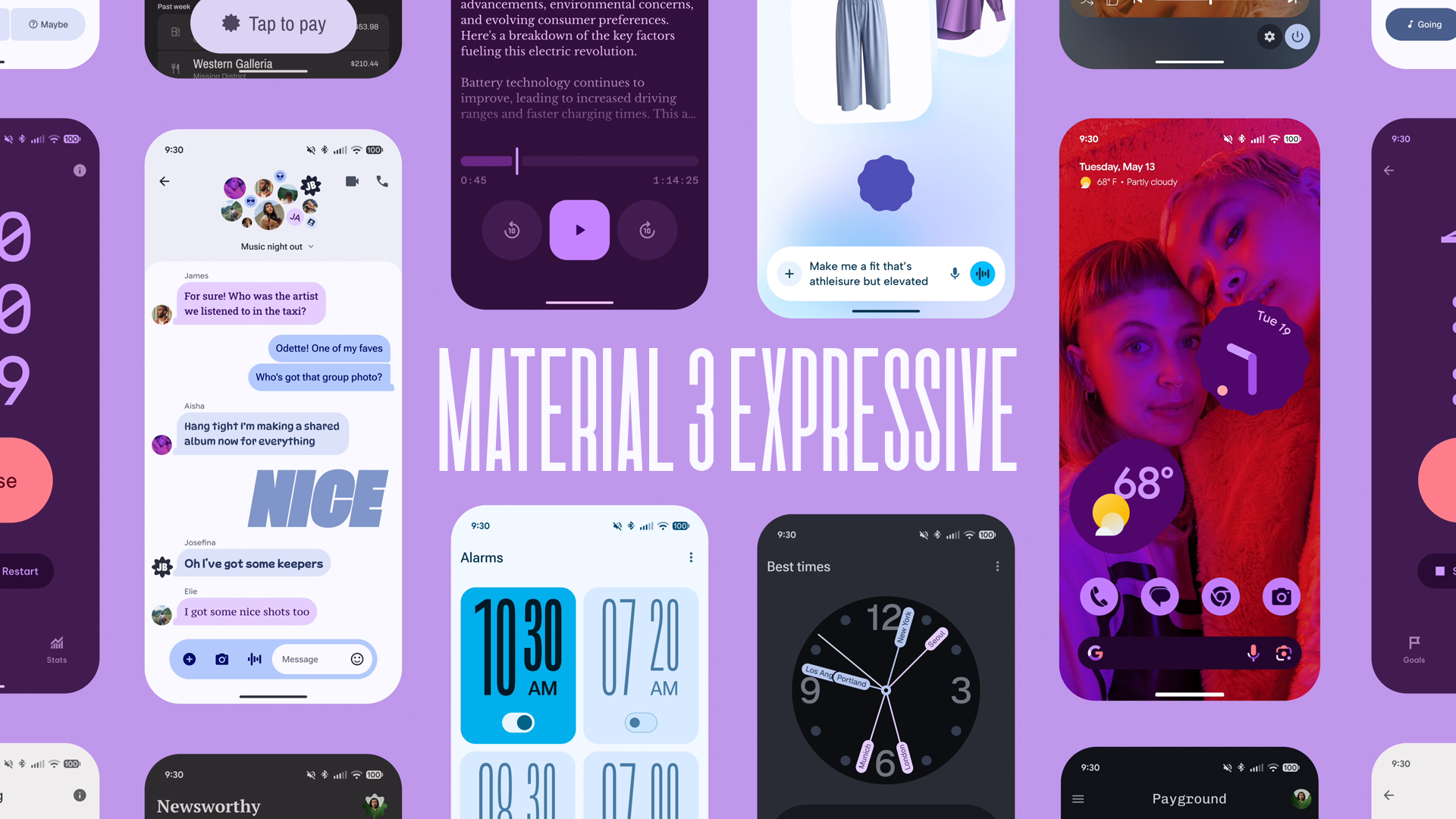Summary
- Android 16 and Material Expressive bring “Shape” wallpaper cutouts, sheathed in vibrant colors, creating a fresh, stand-out aesthetic.
- Android 16 revamps home screens with real-time weather effects, syncing wallpaper visuals with the outside climate’s mood.
- Android’s diverse system leaves Material Expressive changes exclusive to Pixel phones for now, preserving manufacturer individuality.
Android 16 is on its way, bringing with it a brand new design called “Material Expressive.” It’s all about personalization, and that includes wallpaper. Google is doing some interesting things I’ve never seen before—but I think that’s a good thing.
The New “Shape” Wallpaper Effect
Let’s start with the feature that’s a little on the strange side. There’s a new “Shape” effect that allows you to take your chosen image and display it within a specific shape or cutout on your screen, with the surrounding area filled by a solid color of your choosing. You pick from five very Google-y shapes and your wallpaper only shows up within those confines. The rest of your screen’s background is then a single, uniform color, which can be tweaked as well.
I am the type of person who changes their wallpaper very often, but I can honestly say I’ve never thought about doing it this way. I can see it being useful if you had a very busy image for a wallpaper, or even a photo with people in it. This would be a good way to keep things from looking too overwhelming. Unfortunately, you can’t adjust the crop of the image, though.

Related
Android Is Getting Its Biggest Design Refresh in Years
It’s time for Android to get a bit of a facelift. As was previously leaked (accidentally) by Google itself, “Material 3 Expressive” is a pretty big design overhaul that’s all about making your devices even more personal, fluid, and helpful at a glance.
The New “Weather” Wallpaper Effect
If the shape wallpaper feels like a quirky experiment, the second new feature in Android 16 might be more up your alley. Imagine looking at your phone and seeing your wallpaper come alive with the actual weather conditions outside your window. That’s what Android 16’s new dynamic weather effects over your wallpaper will do.
The idea is pretty simple. Let’s say it’s raining where you live: your home screen wallpaper, whether it’s a cool pattern or a photo you snapped, now has raindrops streaking down it. Or maybe it’s a cold winter morning, and you see tiny snowflakes drift across your display. When the sun shines, your wallpaper might gain a soft, shimmering light effect, enhancing the warmth of your chosen image. The effect makes your phone feel more connected to your environment, which I think is pretty cool.
The nice thing about this feature is the flexibility. You can opt for local weather effects, as mentioned above, meaning your phone will use your location to pull real-time weather information and apply the corresponding effect. If you just want to set a particular mood, you can manually select a specific weather effect to be active all the time. The choices right now are Fog, Rain, Snow, and Sun. Selecting these is also a nice way to see what each effect will look like if you do use the Local option.
Try Them Out For Yourself
To try out these new effects for yourself, enroll in the Android 16 beta with a compatible Google Pixel phone. After you have Android 16 on your device, go to Settings > Wallpaper & Style. Choose an image from your library as a wallpaper and then tap the “Effects” button.
As cool as these new wallpaper features are, they raise the same question as with the entire Material Expressive redesign: Who will actually get to use them? Right now, we’re talking about all of these new features as being a part of Android 16. However, in reality, much of this will end up limited to Google Pixel phones.
Android’s fragmented ecosystem means that Material Expressive might not reach the masses overnight, or ever. Unlike iOS, where Apple controls the entire hardware and software stack, Android allows manufacturers to implement their own “skins” on top of the base operating system. So while Google pushes these exciting new design elements, a company like Samsung will almost certainly stick with its own established aesthetic, leaving a significant portion of Android users wondering what all the fuss is about.
“Fragmented” sounds like a bad word, but it’s not necessarily negative. Android has always been about choice. If you like the Material Expressive design, you are free to buy a Pixel phone and enjoy it. But if you prefer Samsung’s One UI design, you can buy a Galaxy phone and enjoy that. There’s no reason for every phone to look the same.

Related
Google’s Massive Android Redesign Looks Great, But Who Will See It?
Google got a bit ahead of itself and accidentally published a blog post about the massive upcoming Android redesign. It looks fresh, modern, and playful—perfect for the current design trends. But there’s a big problem: will enough people actually get to see it?
